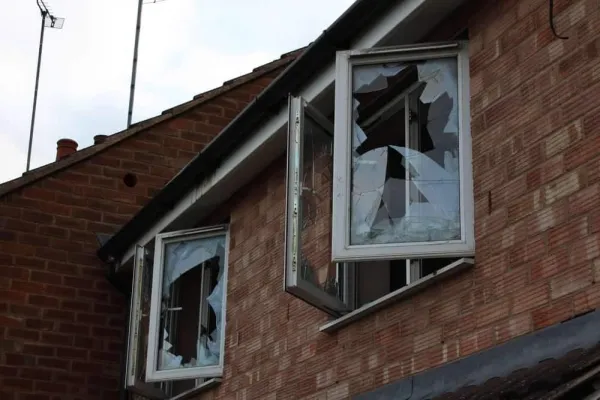In 2024, homeowners will always look for ways to improve home efficiency and reduce costs. Insulating your home is one of the most effective methods to lower your heating bills and make rooms more comfortable. But where do you start, what are the options, and should you hire a professional?
In the article below, we’ve covered the key questions to consider when planning an insulation project for your property. It examines the typical insulation methods used in British homes and weighs up the pros and cons of each.
Do I need to insulate my house?
As we approach 2024, the financial benefits of insulating your home become more apparent. With energy costs on the rise, insulating your home is no longer just a way to make your rooms more comfortable; it’s a smart investment. An uninsulated home can lose up to 25% of heating through its roof and walls, leading to significant energy wastage and higher bills. By insulating, you can potentially save hundreds of pounds each year, making your home more affordable to run.
Reduce heat loss
Properly insulating your property can significantly reduce this heat loss, meaning your heating system doesn’t need to work as hard to maintain a comfortable indoor temperature. This not only saves you money but also reduces your energy consumption. Additionally, insulation can keep your home cooler in summer by reducing heat gain from the sun.
Live more comfortably
Insulation is not just about saving money on energy bills. It’s about creating a more comfortable and enjoyable living environment. By controlling moisture and condensation, insulation helps prevent mould growth and timber rot, ensuring a healthier home. It also significantly reduces outside noise, creating a quieter and more peaceful living environment. For these reasons, insulation is not just a necessary upgrade for most properties, but a valuable one that enhances your comfort and quality of life.
Reduce your environmental impact
With the 2050 net zero targets in mind, insulation is crucial in reducing a home’s carbon footprint and environmental impact. A well-insulated building requires less fossil fuel to heat, contributing to national decarbonisation goals.
Improve your EPC rating
Energy Performance Certificates (EPCs) rate properties on energy efficiency from A to G, with A being the most efficient. Improving insulation can help boost a home’s EPC rating, which may soon be mandated for rental properties under proposed legislation. This can help you understand how energy efficient your home is and identify areas for improvement. By insulating your home, you’re saving on energy bills and making a significant contribution to a greener future.
Improve an older home
Upgrading insulation makes sense whether you live in an older, draughty house or a newer property that still leaks heat. In older homes, typical problem areas are the loft, cavity walls, and solid external walls without cavities.
Newer homes may still lose heat through poorly insulated garage and basement spaces. Adding more can realise further savings even if your home has some insulation. Building regulations have increased insulation requirements over the decades, so newer insulation materials and methods can improve on what’s already there.
With grants and incentives available in 2024, the case for insulating your home is robust.
Methods of insulating your house
The main methods of insulating a house are cavity wall insulation, loft insulation, and solid wall insulation.
Cavity walls
Cavity walls have a gap between interior and exterior brickwork that can be filled with insulation. This method is suitable for most types of homes, including those with cavity walls.
Cavity wall insulation involves pumping granules, beads or foam into the gap between the inner and outer walls. This is a job for professional installers using specialised equipment.
Loft insulation
Lofts can be insulated by laying mineral wool insulation rolls between and over the joists. This method is ideal for homes with accessible lofts.
You can install loft insulation DIY by lifting floorboards and laying insulation rolls between joists.
Solid wall insulation
Solid walls without cavities require stud work filled with insulation and finished with plasterboard. This method is best for homes with solid walls. Secondary glazing is another way to improve insulation on windows specifically.
For solid walls, boards are fixed to battens on the wall face before insulating and plasterboarding over.
Insulation materials
Both natural and synthetic materials are available for insulation. Fibreglass and mineral wool from recycled glass or stone are common batt insulators. These materials are versatile and can be used in a variety of applications.
EPS foam boards
EPS foam boards help insulate solid walls and lofts. These boards are lightweight and easy to install. Eco-friendly options include wood fibre, hemp fibre, sheep’s wool, and cellulose flakes from recycled paper. These materials are sustainable and can provide excellent insulation.
The best insulation material for your project will depend on factors such as the type of insulation, your budget, and your sustainability aims.
Insulation thickness
Measuring insulation thickness in mm, aim for 270mm in lofts and 50mm in walls as a minimum. Going beyond building regs to max out lofts and cavities increases efficiency.
Carefully replace any disturbed insulation after accessing pipes or wiring in the loft – gaps can cause cost spots. Use vapour barrier sheets to reduce moisture penetration into insulation. Install insulation below any cisterns or water tanks to prevent freezing.
Pros and cons of insulating my house
The main benefits of insulating your home are increased energy efficiency, lower heating bills, and improved comfort. Insulation prevents heat loss and allows rooms to stay warmer with less energy usage, saving money and improving the environment. Condensation and mould growth are reduced, along with noise transmission from outside. Additionally, insulation can keep your home cooler in summer by reducing heat gain from the sun, enhancing your comfort all year round.
Lower fuel usage
Specifically, adding insulation can reduce heat loss through the roof by up to 30% and through walls by up to 20%. This directly lowers the fuel usage needed to heat the home. Annual energy bill savings will depend on the property but could be £200+ for a typical semi-detached house. Over the long term, these savings can offset the upfront cost of insulation, making it a cost-effective investment.
Faulty installation may create risks
On the downside, some types of insulation may create fire risks if improperly installed. Cavity wall insulation can sometimes result in damp issues if the work is not carried out correctly. DIY insulation projects can also be disruptive and messy in inhabited homes. And while insulating a property will pay off long-term, the upfront installation cost must be weighed against the savings.
Additionally, insulating an older property may risk trapping moisture inside walls or lofts if adequate ventilation is not maintained. Always carry out repairs to fix leaks and damp problems before insulating. Removing or disturbing asbestos insulation also requires professional help, as it can pose serious health risks if not handled properly. For these reasons, seeking guidance from qualified insulation experts before starting work is advisable.
Shall I bring in a professional to insulate my house?
When it comes to insulation, your safety and the effectiveness of the insulation are paramount. That’s why hiring professional insulation installers, especially for cavity wall insulation, is highly advisable. These professionals have the special equipment and experience to ensure complete and even coverage without gaps, providing you with the best insulation results.
While DIY insulation is possible, a professional service may be worth the additional expense for large, complex jobs across multiple rooms, giving you peace of mind and confidence in the job’s quality.
What to look for when hiring an insulation company
When hiring an insulation company, it’s important to check their qualifications and certifications. Look for providers who are certified by reputable industry bodies such as the National Insulation Association (NIA) or the British Board of Agrément (BBA).
A reputable provider will survey your property free of charge before recommending the best solutions. Get multiple quotes before choosing who to go with. The benefits of professional installation include the job being done quickly and correctly, any mess cleaned up afterwards, and warranties provided.
How much will insulating my house cost?
Insulation costs depend on the property size, insulation type, and installation extent; as a general guide:
- Cavity wall insulation costs around £500 to £1000 for a typical semi-detached or mid-terrace house.
- Loft insulation is cheaper at £200 to £500
- Solid wall insulation is £6,000 to £14,000 due to the labour involved.
- Secondary glazing units cost around £100 to £300 per window.
DIY insulation can significantly reduce these costs, though the trade-off is time and effort doing the work yourself. You can tackle loft insulation with DIY for £100 or less in materials.
Due to the complexity, solid wall insulation is not advisable as a solo project for inexperienced renovators. Always get professional advice on the best locations to target insulation efforts for the greatest return on investment.
Can I insulate my house myself?
Simple loft insulation using mineral wool rolls can realistically be installed DIY. This involves clearing the loft, measuring between joists, cutting rolls to size and fitting them snugly.
Take safety precautions against asbestos exposure, wearing goggles, masks, and gloves. Measure carefully to avoid overloading joists, and don’t block eave vents.
DIY cavity wall insulation is not recommended – the risks outweigh the potential savings. Solid wall insulation is a significant project requiring expertise to get right. If you’d like to sell your house to a cash house buyer, get in touch today.
















